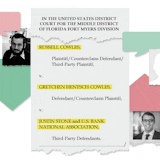The Minnesota Early Learning Foundation (MELF), backed by state businesses, has gained traction two years into its five-year quest to raise $30 million.
The money will fund early learning initiatives, pilot-program scholarships and the critical parent-involvement efforts that will lead to recommendations to the Legislature about the best ways to boost the number of kids ready for kindergarten. Today only half of kids are ready to learn when they start school.
The foundation turned down a $1 million state appropriation three years ago that had mandates and threatened to encumber the process. Instead, board members, supportive companies and individuals have contributed $18 million so far to fund several initiatives that are yielding clues to success and benefiting hundreds of preschoolers annually from core-city St. Paul to rural Nicollet County.
"The road gets a little steeper during the second half [of the foundation's existence]," said Rob Johnson, a board member and a retired Cargill executive.
"But we're optimistic and on course. It will be a great innovation if we accomplish nothing more than giving parents [and child-care] providers a common evaluation system that will drive more early learning and good outcomes. Low-income and immigrant families have oversubscribed on the pilot programs in the targeted areas. I believe we'll raise the rest of the money and deliver on our promises."
This is not a group of anti-government millionaires telling government -- which supplies a third of the $2 billion-plus spent on Minnesota day care -- that business knows better.
Rather it is an astute and pragmatic group of major employers -- confused by the Byzantine scheme of formulas, agencies and funding schemes -- who are trying to focus on best practices and incentives that will get more families engaged in quality early-age education from home to day care.
The initiative springs from Minneapolis Federal Reserve Bank economists Art Rolnick and Rob Grunewald, who found in a 2003 study that early-age education for at-risk kids yields as much as a 16 percent annual return to taxpayers in terms of lower special-education costs, less criminality and social services, and more taxpayers.


